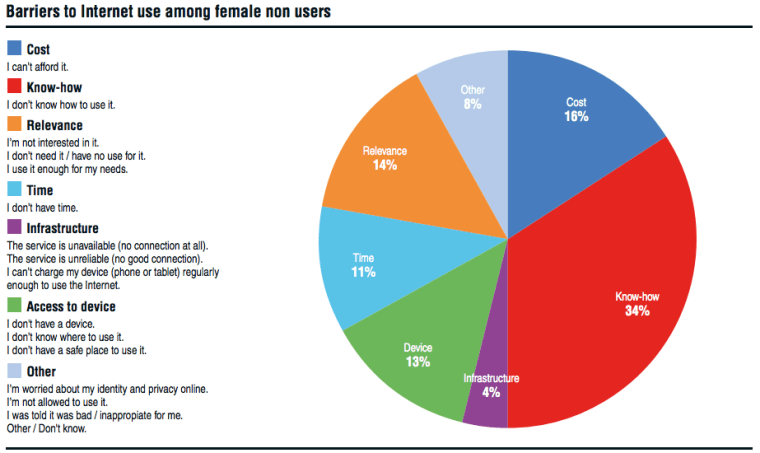While adoption of the Internet has spread rapidly around the globe, women in developing countries aren't benefiting as much as men.
A new study from the World Wide Web Foundation found that in low-income communities in nine countries — including Kenya, Colombia and the Philippines — women were nearly 50 percent less likely to access the Internet than men in their same communities.
Around 37 percent of the women surveyed went online, compared to 59 percent of men. Those women who did use the Internet were 25 percent less likely to use it for job-seeking and 52 percent less likely to express controversial views online.
There are around 4 billion people online across the globe, many of them connecting with cellphones. But there is a "digital divide" that leaves large portions of the population in the dark.

"Internet use among young, well-educated men and students in poor communities of the developing world rivals that of Americans, while Internet use among older, uneducated women is practically non-existent," the study said.
How do nations close that digital divide? The study found that women with some secondary education were six times more likely to use the Internet than women with only a primary education or no education.
Overall, simply beaming the Internet to everyone in the world isn't enough, the study concluded. As long as women are marginalized and denied access to education, they will have trouble taking advantage of all of the advantages the Web has to offer.
